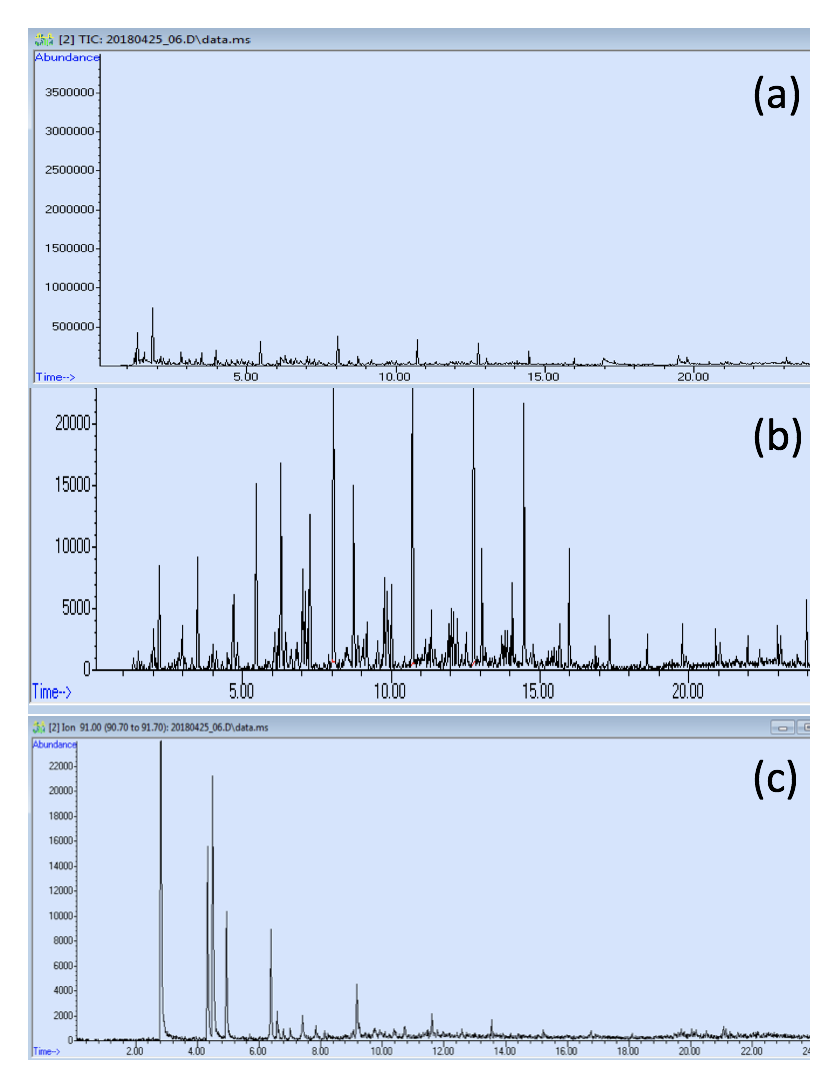|
Introduction
Nowadays, road traffic generates a significant source of gaseous and particulate pollution in the atmosphere. The impact of these aerosols is a major issue in many areas such as agriculture, climate and especially health. A significant proportion of this particulate matter is composed of secondary organic aerosols (SOAs) resulting from the oxidation of volatile organic compounds (VOCs). This work focused on the qualitative determination of VOCs in emissions from diesel vehicles.
Experimental conditions
As the vehicle was operated on a chassis dynamometer, the exhaust emissions - diluted with purified air - were sampled in a heated transfer line directly connected to the vehicle tailpipe. VOC were collected by sampling diluted exhaust through Tenax TA filled stainless tubes at a flow rate of 50 mL/min. The Tenax samples were analyzed by gas chromatography/mass spectrometry system (Agilent 6890 GC/ 5973 MSD) equipped with a Markes Unity thermal desorption sample extraction and injection system. The organics were thermally desorbed from the Tenax adsorbent at 290°C for 5 min at a spitless helium flow mode of 50 mL/min. The desorbed analytes were trapped at -10°C in a thin glass tube filled with 20 mg of Tenax TA. Then the trap was flashed heated to 290°C at 40°C/s for 5 min. The analytes were introduced in the analytical column, a HP1 fused silica capillary column (25m x 0,25mm with 0,25m film thickness). The Helium carrier gas flow was set at 1.2 mL/min. The mass spectrometer with electron ionization of 70 eV was operated in scan mode at a rate of 3.45 scan/s from 33 to 450 uma.
Results
Figure 1 shows the chromatograms of a typical Tenax sample collected in exhaust emission of diesel vehicle.
Fig 1a shows the chromatogram with the total ion current (TIC). Although there are many individual peaks, the vast majority of the TIC appears as a broad hump of coeluting organics compounds that cannot be speciated. The unresolved compounds include mainly linear alkanes (n-alkanes) and branched alkanes, alkylcyclohexanes and alkylbenzenes.
The presence of the alkanes can be demonstrated in the chromatogram by the extraction of the characteristic fragment of these compounds (m/z = 71), as shown in the figure 1b. The main n-alkanes can be identified using the NIST library confirming their retention time, determined from the analysis carried out under the same analytical conditions with the reference compounds.
Because the tropylium ion (C7H7+) is often found in the fragmentation of aromatic compounds, the presence of alkylbenzenes is evidenced by the extraction of the fragment m/z = 91 in the TIC chromatogram as shown in figure 1c.
Conclusion
The use of Tenax TA for collecting organic compounds and an analysis by thermal desorption coupled with GC/MS is a method of choice for qualitative analysis of VOC in automobile exhaust. Our results are demonstrating that alkanes (linear and branched) are the main class of compounds emitted by diesel vehicles.
|
|

Figure 1 : Chromatogram of total ion current (a);
Chromatogram of m/z = 71 (b); Chromatogram of m/z = 91 (c)
|


